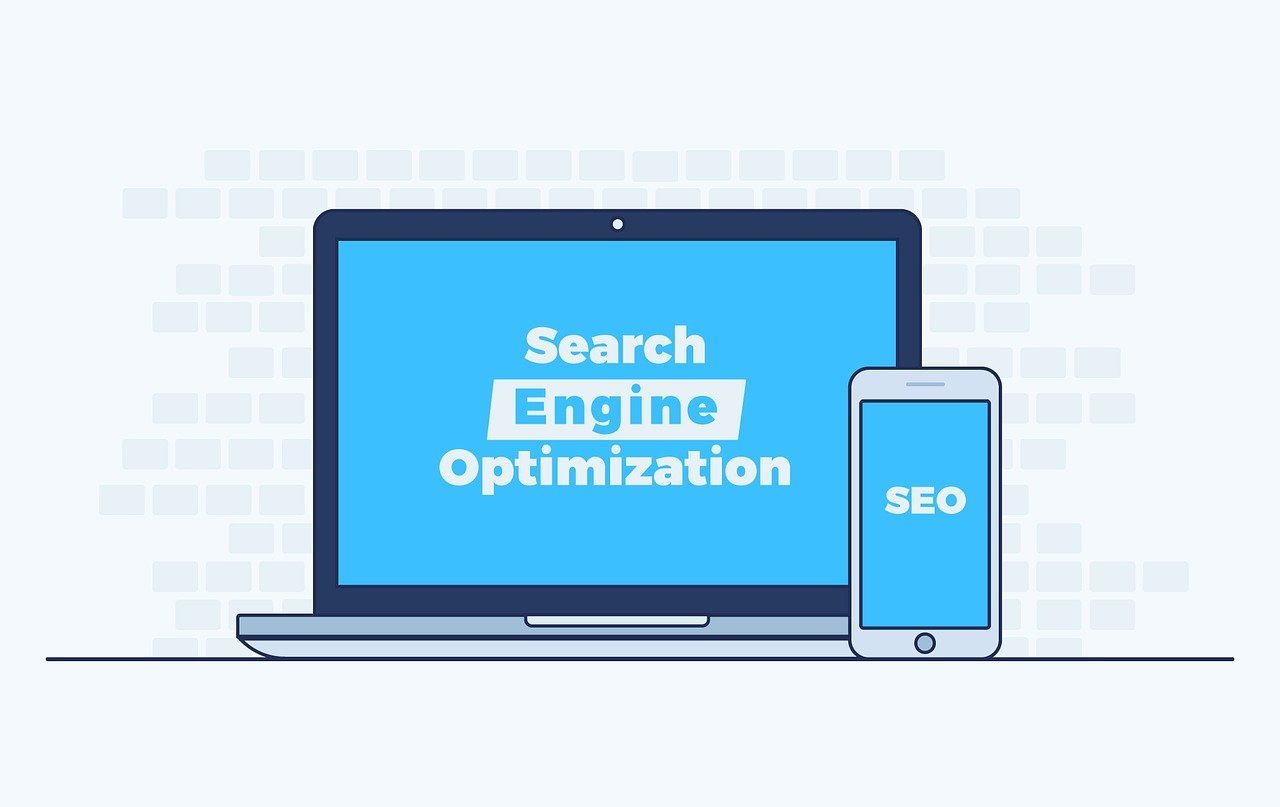In today’s digital landscape, search engine optimization (SEO) plays a pivotal role in driving organic traffic to websites. One crucial aspect of SEO is building high-quality backlinks, which serve as essential signals for search engines to determine a website’s authority and relevance. Among various types of backlinks, contextual backlinks have emerged as a highly effective strategy for enhancing a website’s online presence and search engine rankings.
So, what exactly are contextual backlinks? In simple terms, they are hyperlinks placed within relevant and meaningful content, seamlessly integrating with the surrounding text. Unlike traditional backlinks, which may be placed in unrelated or low-quality websites, contextual backlinks are strategically embedded within contextual content that complements the linked page’s subject matter. This context-based approach lends more credibility and value to the linked page, making it more appealing to search engines and users alike.
The significance of contextual backlinks cannot be overstated in the realm of SEO. Search engines consider contextual backlinks as strong signals of a website’s authenticity, expertise, and authority on a given topic. When high-quality websites with contextual relevance link back to your content, search engines perceive your website as a valuable resource and reward it with improved visibility in search results.
The purpose of this article is to provide you with a comprehensive guide to contextual backlinks, helping you understand their importance, benefits, and practical implementation. Whether you are a business owner, a digital marketer, or a website administrator, this guide will equip you with the knowledge and strategies needed to leverage contextual backlinks effectively and boost your website’s SEO performance.
In the following sections, we will delve into the intricacies of contextual backlinks, explore their benefits, discuss best practices for building them, highlight relevant tools and resources, and even showcase real-life case studies to illustrate their successful implementation. By the end of this guide, you will have a solid understanding of contextual backlinks and be ready to integrate them into your SEO strategy.
So, let’s embark on this journey to unravel the power of contextual backlinks and unlock the potential for greater online visibility, higher search engine rankings, and increased organic traffic.
Understanding Contextual Backlinks
Before diving into contextual backlinks, let’s first establish a clear understanding of backlinks and their significance in SEO. Backlinks, also known as inbound links or incoming links, are hyperlinks that point from one website to another. These links act as endorsements or references, indicating that the linked website is a valuable resource or source of information.
Search engines, like Google, consider backlinks as a vote of confidence for a website’s credibility and authority. The more high-quality backlinks a website has, the more search engines perceive it as reliable and relevant. Consequently, search engines are more likely to rank such websites higher in search results.
Differentiating Contextual Backlinks from Other Types of Backlinks
Contextual backlinks stand out among the various types of backlinks due to their unique characteristic of being embedded within relevant content. Unlike standalone backlinks that may appear in sidebars, footers, or unrelated sections of a webpage, contextual backlinks are strategically placed within the main body of content.
By integrating contextual backlinks seamlessly within relevant content, website owners aim to provide additional value and relevance to both search engines and users. These backlinks contribute to the overall context and flow of the content, enhancing its informational value and enriching the user experience.
How Contextual Backlinks Enhance Relevance and Authority
Contextual backlinks play a crucial role in establishing the relevance and authority of a website. When a reputable website in the same niche or industry includes a contextual backlink to your content, it signals to search engines that your website is a reliable source of information on that specific topic. This association helps search engines understand the context and subject matter of your website, improving its chances of ranking higher for relevant search queries.
Moreover, contextual backlinks contribute to the concept of “link juice” or “link equity.” When a website with high authority and trustworthiness links to your content, some of its authority is passed on to your website through the contextual backlink. This boost in authority can positively impact your website’s overall SEO performance, leading to improved rankings and visibility.
In summary, contextual backlinks provide a two-fold benefit: they enhance the relevance and contextual value of the linked content, while also contributing to the overall authority and credibility of the linked website. By understanding the power of contextual backlinks, you can strategically leverage them to strengthen your website’s online presence and attract valuable organic traffic.
Benefits of Contextual Backlinks
Contextual backlinks offer a range of benefits that make them a valuable asset in any SEO strategy. Let’s explore some of the key advantages they bring to the table:
Improved Search Engine Rankings
One of the primary benefits of contextual backlinks is their positive impact on search engine rankings. When search engines analyze the backlink profile of a website, they take into consideration the quality, relevance, and authority of the linking websites. Contextual backlinks from reputable and authoritative websites provide strong signals to search engines, indicating that your website is a trusted source of information in a particular niche.
As search engines aim to deliver the most relevant and valuable results to their users, websites with a solid contextual backlink profile are more likely to rank higher in search engine results pages (SERPs). The increased visibility in SERPs can result in greater organic traffic, allowing you to reach a broader audience and potentially attract more leads and customers.
Increased Organic Traffic
Contextual backlinks can significantly contribute to driving organic traffic to your website. When your website is linked from relevant and authoritative content, it exposes your brand and content to a broader audience who are already interested in the topic or industry. Users who come across your contextual backlink are more likely to click through to your website, as the link is embedded within valuable and related content.
Additionally, as your website climbs up the search engine rankings due to contextual backlinks, it becomes more visible to users searching for relevant keywords and topics. This increased visibility can result in a steady stream of organic traffic from users actively seeking information or solutions related to your industry.
Enhanced Website Authority and Credibility
Contextual backlinks contribute to building your website’s authority and credibility. When reputable websites within your niche or industry link to your content, it signals to both search engines and users that your website is a trusted and reliable source of information. The association with authoritative websites establishes your website’s authority and enhances its reputation within the industry.
Having a strong contextual backlink profile can also positively impact your website’s perceived credibility. Users are more likely to trust and engage with websites that are endorsed by established and respected sources. This trust factor can lead to increased user engagement, longer time spent on your website, and a higher likelihood of conversions.
Enhanced User Experience through Relevant Content Linking
Contextual backlinks not only benefit search engines but also enhance the user experience on your website. When users come across a contextual backlink while reading relevant content, it provides them with a seamless pathway to explore additional information on the same topic. This linking of related content creates a cohesive and informative user experience, allowing users to delve deeper into the subject matter without disruption.
By strategically incorporating contextual backlinks within your content, you can guide users to valuable resources, further enhancing their understanding and engagement. This user-focused approach can lead to increased user satisfaction, longer website visits, and a higher likelihood of repeat visits and conversions.
How to Build Contextual Backlinks
Building contextual backlinks requires a strategic and proactive approach. Here are some effective methods and techniques to help you build contextual backlinks for your website:
Conducting Keyword Research and Identifying Relevant Content
Start by conducting keyword research to identify relevant topics and keywords related to your industry. Understanding the specific keywords and topics that resonate with your target audience allows you to create content that aligns with their interests and needs.
Once you have a list of target keywords, focus on creating high-quality, informative, and engaging content around those keywords. This content will serve as the foundation for contextual backlinks, as it provides valuable resources that other websites would want to link to.
Guest Blogging and Contributing to Authoritative Websites
Guest blogging remains an effective method for acquiring contextual backlinks. Identify authoritative websites and blogs within your industry that accept guest contributions. Craft well-researched and insightful guest posts that align with the target website’s content and audience.
Within your guest post, strategically incorporate contextual backlinks to relevant pages on your website. These links should naturally flow within the content and provide additional value to readers. Remember, the primary focus should be on delivering quality content that educates and engages the audience, rather than solely focusing on acquiring backlinks.
Utilizing Social Media and Online Communities for Link Building
Engaging with social media platforms and online communities can help you build contextual backlinks. Actively participate in relevant discussions, forums, and industry-specific groups where you can share your expertise and contribute valuable insights.
By providing helpful information and establishing yourself as a knowledgeable authority, you increase the chances of others linking back to your website’s content. When sharing your content on social media, ensure that the posts contain contextual information and encourage users to explore further by linking back to your website.
Leveraging Content Marketing Strategies for Contextual Backlinks
Content marketing is a powerful tool for attracting contextual backlinks naturally. Create comprehensive, informative, and visually appealing content such as infographics, whitepapers, case studies, or industry reports that are likely to be shared and linked to by other websites.
Promote your content through various channels, including email outreach, influencer collaborations, and content distribution platforms. The goal is to increase the visibility and reach of your content, making it more likely to be discovered and linked by relevant websites.
It is important to note that buying contextual backlinks is not recommended. Search engines frown upon manipulative tactics and may penalize websites that engage in such practices. It is best to focus on organic link building methods that prioritize quality and relevance.
At Toppdomain, we understand the importance of contextual backlinks in SEO and can assist you with your link building efforts. Feel free to contact us, and our team will be happy to provide guidance, strategies, and solutions tailored to your specific needs.
Remember, building contextual backlinks is a long-term and ongoing process. Consistently producing high-quality content, engaging with relevant communities, and actively promoting your brand will gradually attract natural and valuable contextual backlinks, bolstering your website’s authority and visibility.
Best Practices for Contextual Backlinks
To maximize the effectiveness of your contextual backlinks, it’s essential to follow best practices that ensure quality, relevance, and long-term success. Consider the following guidelines when building and managing your contextual backlinks:
Ensuring Relevancy and Quality of the Linking Content
When acquiring contextual backlinks, prioritize relevancy and quality. Seek opportunities to place your links within content that is closely related to your website’s niche or industry. Ensure that the linking content provides value to the readers and aligns with the context of your linked page.
Avoid unrelated or spammy websites that may tarnish your website’s reputation and have a negative impact on your search engine rankings. Focus on obtaining backlinks from reputable and authoritative websites that are recognized as valuable sources of information within your industry.
Diversifying Anchor Text and Using Natural Language
Anchor text, the clickable text of a hyperlink, plays a significant role in contextual backlinks. Use a diverse range of anchor text that reflects the natural language and context of the linking content. Avoid over-optimizing anchor text by using repetitive or keyword-stuffed phrases, as this may raise red flags with search engines.
Instead, opt for anchor text that accurately describes the linked page and provides additional context to both search engines and users. Utilize variations of relevant keywords, brand names, or descriptive phrases that enhance the user experience and maintain the integrity of the linking content.
Avoiding Spammy or Low-Quality Backlinks
Be cautious of low-quality or spammy backlinks, as they can have a detrimental impact on your website’s SEO performance. Such backlinks can come from link farms, irrelevant directories, or websites with a poor reputation. Search engines are becoming increasingly sophisticated in identifying and penalizing websites that engage in manipulative link building practices.
Focus on acquiring backlinks from trusted and authoritative sources that naturally align with your website’s content and purpose. Conduct thorough research and due diligence to evaluate the quality and credibility of potential linking websites before pursuing any backlink opportunities.
Monitoring and Analyzing Backlink Performance
Regularly monitor and analyze the performance of your contextual backlinks to gain insights into their effectiveness. Use tools and platforms to track the traffic, engagement, and conversions driven by your backlinks. Identify which backlinks are generating the most value and contributing to your SEO goals.
Additionally, keep an eye on the overall health of your backlink profile. Periodically review and disavow any spammy or low-quality backlinks that may arise. Maintaining a clean and high-quality backlink profile helps preserve your website’s authority and ensures long-term success in search engine rankings.
Remember, building and managing contextual backlinks can be a complex and time-consuming process. If you need assistance in your link building efforts, consider partnering with a professional link building agency like Toppdomain. Our experienced team can provide expert guidance, strategies, and customized solutions to help you acquire high-quality contextual backlinks that propel your SEO success.
By following these best practices, you can establish a strong contextual backlink profile that enhances your website’s visibility, authority, and organic traffic. Emphasizing quality, relevance, and natural linking practices will contribute to the long-term success of your SEO efforts.
Conclusion
As we conclude this guide on contextual backlinks, let’s recap the key points and emphasize the importance of incorporating contextual backlinks into your SEO strategy.
Contextual backlinks are a powerful tool for enhancing your website’s online presence and search engine rankings. By strategically placing relevant and high-quality backlinks within contextual content, you can boost your website’s authority, credibility, and relevance.
Throughout this guide, we explored the various benefits of contextual backlinks. They contribute to improved search engine rankings, increased organic traffic, enhanced website authority and credibility, and a better user experience. These advantages make contextual backlinks a valuable asset in your SEO arsenal.
Key Takeaways for Implementing Contextual Backlinks Effectively
To make the most of contextual backlinks, remember these key takeaways:
- Prioritize relevancy and quality when acquiring contextual backlinks. Seek links from authoritative and reputable websites within your industry.
- Diversify anchor text and use natural language that aligns with the context of the linking content.
- Avoid spammy or low-quality backlinks that can harm your website’s reputation and SEO performance.
- Monitor and analyze the performance of your backlinks to gain insights and optimize your strategy.
Building contextual backlinks can be a complex and time-consuming process. If you need guidance or support, don’t hesitate to reach out to a professional link building agency like Toppdomain. Our experienced team is here to help you navigate the intricacies of link building and develop a successful contextual backlink strategy.
Incorporating contextual backlinks into your SEO efforts requires ongoing commitment and adaptation. Stay updated with the latest industry trends, algorithm changes, and best practices to ensure your contextual backlink strategy remains effective and aligned with search engine guidelines.
Remember, contextual backlinks are not just about boosting your website’s visibility and rankings; they are also about providing valuable resources and enhancing the user experience. By creating high-quality content, engaging with relevant communities, and building organic relationships, you can attract natural contextual backlinks that solidify your website’s position as a trusted and authoritative source of information.
Now, armed with the knowledge and insights from this guide, it’s time to take action. Start implementing contextual backlinks in your SEO strategy and watch your website’s visibility, traffic, and credibility soar.








![76 Tips to Optimize your Website for SEO [Guide]](https://toppdomain.com/wp-content/uploads/2023/12/web-3967926_1280.jpg)